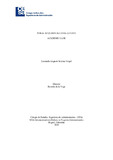Nokia acquires alcatel lucent: academic case

Fecha
2019-11Citación
Metadatos
Mostrar el registro completo del ítem
Documentos PDF
Resumen
En 2015, Nokia anunció la adquisición de su competidor francés AlcatelLucent en un acuerdo de acciones. A finales de 2015, Nokia anunció la estructura organizativa compuesta por cuatro grupos empresariales: redes móviles, redes fijas, Aplicaciones y análisis, y redes IP / ópticas. Tras la adquisición, Nokia ha ido evolucionando su estructura operativa, con cambios como la creación de nuevos grupos empresariales y cambios en las funciones de soporte, entre otros. Pero a pesar de la evolución natural del diseño organizativo de una gran corporación, el modelo de grupo empresarial seguido de la adquisición de Alcatel-Lucent no solo se mantuvo sino que también se fortaleció con la creación de nuevos BG. Sin embargo, en octubre de 2019, Nokia anunció que la política de pago de acciones se pausaría hasta nuevo aviso, debido a un retraso en la carrera de la última tecnología de banda ancha móvil llamada 5G frente a sus principales competidores.
Resumen
In 2015, Nokia announced the acquisition of its French-based competitor AlcatelLucent in an all-stock agreement. By the end of 2015, Nokia announced the organizational structure composed of four business groups: Mobile Networks, Fixed Networks,
Applications & Analytics, and IP/Optical Networks. After the acquisition, Nokia has been evolving its operational structure, with changes such as creation of new business groups and changes in the support functions, among others. But despite the natural evolution of the organizational design of a large corporation, the business group model followed the acquisition of Alcatel-Lucent was not only maintained but also strengthened with the creation of new BGs. In October 2019, however, Nokia announced the share payment policy to be paused until new notice, due to a lag in the race of the latest mobile broadband technology called 5G against its main competitors.

